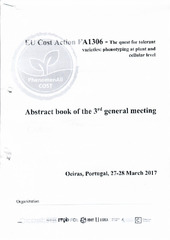Приказ основних података о документу
Effect of G × E interaction on oil and protein content in wheat (Triticum aestivum, L.)
| dc.creator | Kondić-Špika, Ankica | |
| dc.creator | Mladenov, N. | |
| dc.creator | Marjanović-Jeromela, Ana | |
| dc.creator | Grahovac, Nada | |
| dc.creator | Mikić, Sanja | |
| dc.creator | Trkulja, Dragana | |
| dc.creator | Hristov, N. | |
| dc.date.accessioned | 2023-08-15T09:48:58Z | |
| dc.date.available | 2023-08-15T09:48:58Z | |
| dc.date.issued | 2017 | |
| dc.identifier.uri | http://fiver.ifvcns.rs/handle/123456789/3699 | |
| dc.description.abstract | Oil and protein content in wheat grain are quality indicators important for food processing, cosmetics and pharmaceutical industries. These and many other quality parameters could be signiticantly influenced by genotype, growing conditions and cultivation practices, especially fertilization. The objective of this study was to investigate effects of genotype, growing season, mitrogen (N) fertilization and their interactions on the oil and protein content in 24 varieties of winter wheat (Triticum aestivum, L.). Field trials with two N rates (low nitrogen N4s and high nitrogen Nii) were conducted at the location of Rimski Sanéevi, Serbia, during two growing seasons. The oil was extracted from wheat bran obtained by laboratory mill MLU 202. Classical Rushkovsky method was used to determine oil content, while protein content was determined by the ICC 105/2 method. Significant variability was found among the genotypes for both analysed traits. In two growing seasons and at different N rates, the oil content varied from 2.02% to 5.58%, with the average value of 3.96% and coefficient of variation (CV) 9.2%. The protein content ranged from 10.7% to 17.7% with the CV of 3.1%. All sources of variation (genotype - G, year - Y and N fertilization - F) and their interactions had significant effects on oil and protein content, except the Y x F interaction on the latter. Regarding the oil content, the effect of the year was stronger than the effect of nitrogen. In contrast, protein content was more affected by the N fertilization than by the year. Principal component analysis was used for grouping genotypes according to their stability and reaction to different growing environments. Cvs. Cipovka, Dragana and Simonida were identified as very stable with high oil content in different growing conditions, while cvs. Bankut 1205 and Banatka were identified as potential sources of high protein content. The identified genotypes can serve as parents in wheat breeding for higher oil and protein content. | sr |
| dc.language.iso | en | sr |
| dc.rights | openAccess | sr |
| dc.rights.uri | https://creativecommons.org/licenses/by/4.0/ | |
| dc.source | 3rd general meeting of the EU COST action FA1306 "The quest for tolerant varieties: phenotyping at plant and cellular level", Oeiras, Portugal | sr |
| dc.subject | oil content | sr |
| dc.subject | protein content | sr |
| dc.subject | wheat | sr |
| dc.title | Effect of G × E interaction on oil and protein content in wheat (Triticum aestivum, L.) | sr |
| dc.type | conferenceObject | sr |
| dc.rights.license | BY | sr |
| dc.citation.spage | 66 | |
| dc.identifier.fulltext | http://fiver.ifvcns.rs/bitstream/id/9260/bitstream_9260.pdf | |
| dc.identifier.rcub | https://hdl.handle.net/21.15107/rcub_fiver_3699 | |
| dc.type.version | publishedVersion | sr |


